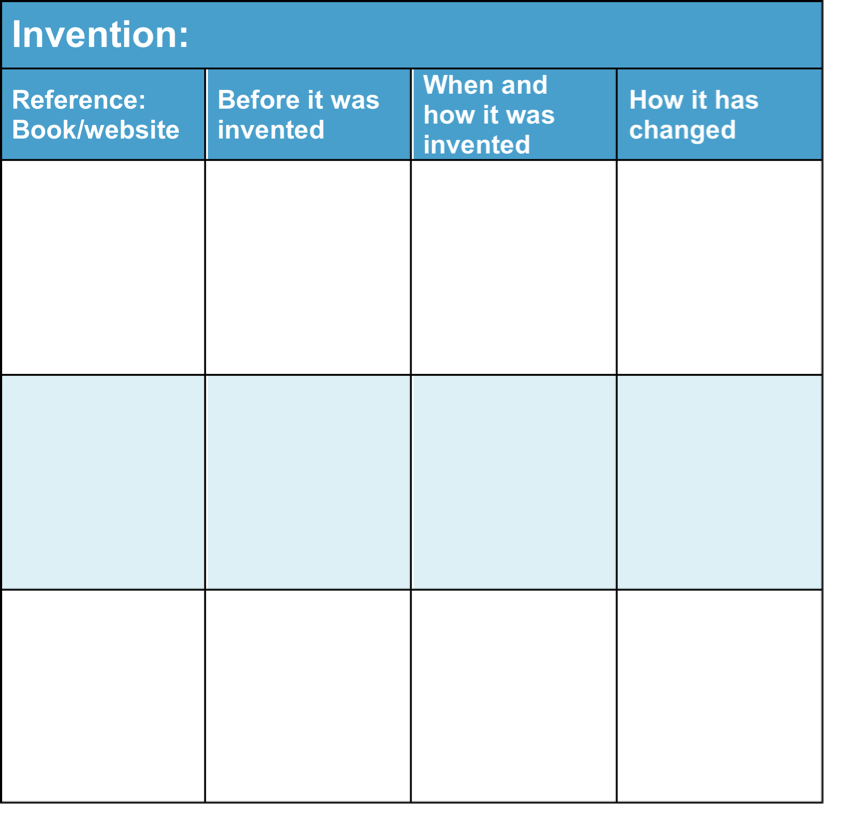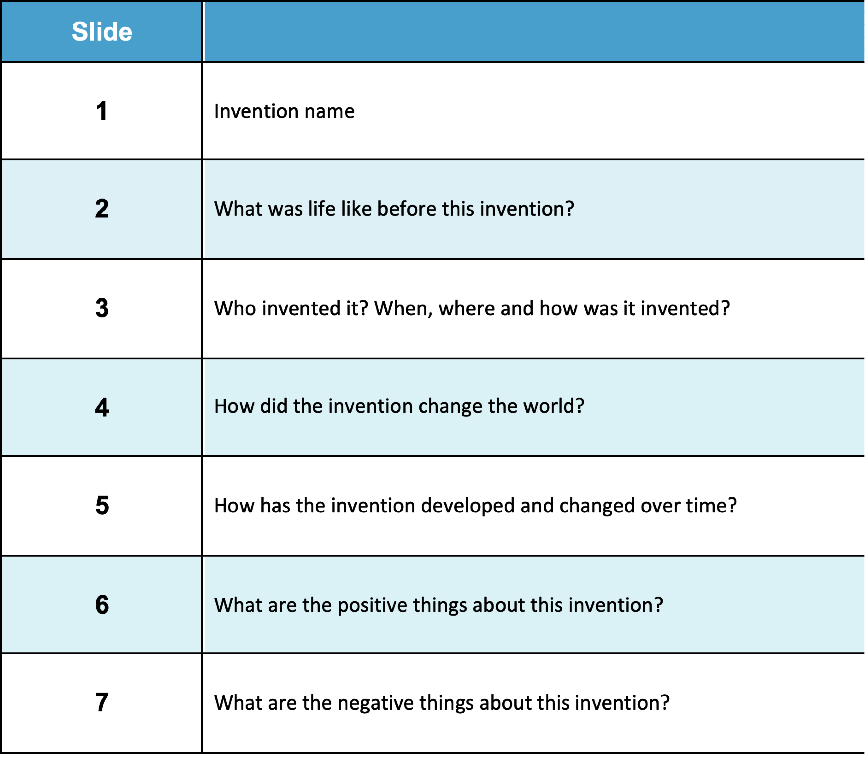Information for Teachers
Curriculum links
Australian Science Standards
CS (ACSSU074) Nature and uses of common materials
CS (ACSSU074) Uses of materials based on their properties
DT (ACTDEK013) Suitability of materials, systems, components, tools and equipment for particular purposes
New Zealand Science Achievement Objectives
MW: The characteristic chemical and physical properties of a range of different materials
MW: Chemical and physical properties of a range of different materials, technological uses and natural processes
Helpful websites
Students can search using: Inventions that changed the world
Children’s Encyclopedias such as Kiddle have lots of information about many different inventions. Students enter the name of the invention to search this site.
They can find out about the development of an invention by searching _____ (invention name)+history or invention name, or inventor
How to search the internet
1 Keep your request short
Fewer words will give a more accurate search.
2 Choose exactly what you want
For example: Arctic Circle Climate
3 Use quotes
Double quotes around a set of words tell the search engine to consider those exact words in that exact order without any change. For example: “Arctic Circle Climate”
4 Use the plus sign (+)
If you add a plus sign (+) between words, the internet will search for all the words. For example: migrate+birds+whales+mammal
5 Use the minus sign (–) to say what you don’t want
Use a minus sign (–) to show words you do not want to appear in your results. For example: if you search for burrowing animals and do not want mammals in your search, –mammals will exclude mammals. Note that you need to put a space before the minus sign for the word to be excluded.
6 Be very clear about what you don’t want
Part 1
Ask questions and make predictions
After reading That’s a Good Idea! you may have many questions about how inventions have changed the way we live.
List your questions
- Compare your list with questions that others have.
- Choose a question you would like to investigate.
- You can work alone, with a partner, or in a small group.
You may want to choose one or more of these questions to investigate
Q1. How do inventions change our lives?
Q2. What do people need to know about to create new things?
Q3. What further questions do you have about everyday inventions and how they came about?
Q4. Which invention has most changed the world?
Go to Part 2 Plan and investigate →Part 2
Plan and investigate
Do searches in the internet or in books or talk to people who can help to find the information you are looking for.
Your teacher may suggest suitable websites for further information.
Go to Part 3 Record and analyse data →Part 3
Record and analyse data
Find a way of recording your information that will allow you to see any patterns in the data.
Data Chart for inventions
 Download Chart
Download Chart
Go to Part 4 Evaluate the information →
Part 4
Evaluate the information
1. Look over the information you have gathered and the patterns you have found.
How has the invention changed our lives?
2. Search for other patterns.
Has the invention changed our lives in a positive way?
Has the invention changed our lives in a negative way?
3. Makes notes about what you find.
Go to Part 5 Communicate and share ideas →Part 5
Communicate and share ideas
Use the information in the two charts to prepare a chart, poster, or slideshow about the invention. Use and adapt this plan to support your slideshow.
Compare the impact of the invention you have investigated with other groups.
Which invention has had the most impact?
What would the world be like without them?
 Download Chart
Download Chart
← Return to menu
